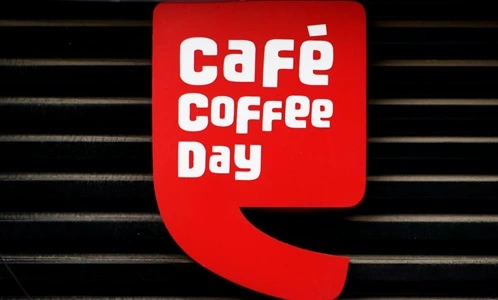Café Coffee Day (CCD) is a well-known name in India’s coffee culture, recognized for pioneering the café chain industry since its launch in 1996. Over the years, the brand has built a significant presence, although it has faced challenges, including competition, debt, and store closures. Here’s a look at how CCD earns profit and sustains its business.

Cult Fit Revenue Streams
1. Retail Coffee Outlets: The core of Café Coffee Day’s business model is its chain of cafés, which has historically been the main driver of revenue. The cafés offer a variety of coffee-based beverages, snacks, and desserts, catering to the urban population across India. At its peak, CCD operated over 1,700 outlets, but this number has dropped significantly to around 469 as of 2023. Despite the reduction in outlets, CCD has managed to grow its revenues through effective debt management and an increased focus on more profitable outlets. In 2023, CCD reported revenues of ₹869 crore, with its coffee shops accounting for 94% of total turnover.
2. Franchise Model: CCD leverages franchising to expand its presence, allowing aspiring entrepreneurs to open CCD-branded outlets in exchange for a franchise fee. This model not only allows for rapid expansion but also provides the company with a steady stream of revenue from franchise fees and royalties.
3. Vending Machines: CCD operates a vast network of coffee vending machines, primarily located in corporate offices, hotels, and business hubs. As of 2023, the company had close to 50,000 vending machines, which provide an additional revenue stream by offering convenient, high-quality coffee in non-café environments.
4. Coffee Day Beverages and Exports: CCD also earns revenue from its beverage and FMCG division, where it sells coffee beans, powder, and packaged drinks under the Coffee Day brand. This division includes Coffee Day Fresh ‘n’ Ground, Coffee Day Square (a premium café line), and Coffee Day Beverages, catering to vending machine sales.
5. International Presence: While CCD is primarily focused on the Indian market, it has expanded internationally, with outlets in locations like Austria, Malaysia, and Egypt. Although these international ventures contribute to the brand’s visibility, their overall impact on revenue is smaller compared to its operations in India.
Cult Fit: Key Factors in Profitability
1. Cost Structure: The cost structure of Café Coffee Day includes both fixed and variable costs. Fixed costs include rent for café spaces, salaries of employees, and maintenance, while variable costs involve raw materials like coffee beans, milk, and packaging materials. High rental costs, especially in prime urban areas, have been a significant challenge for CCD, affecting its profitability.
To manage these costs, CCD has implemented strategies such as renegotiating supplier contracts, streamlining its menu to focus on high-margin items, and optimizing inventory. These efforts have helped reduce overall expenses and improve profit margins.
2. Debt and Financial Challenges: A major issue CCD faced was the significant debt burden it accumulated over the years. Following the tragic demise of its founder, V.G. Siddhartha, in 2019, the company was left grappling with a massive debt of ₹7,000 crore. Under the leadership of Malavika Hegde, the company has since managed to reduce its debt substantially. CCD’s ability to bring down its net debt from ₹1,524 crore in 2022 to ₹881 crore in 2023 was a crucial step in its path to financial recovery.
3. Adapting to Market Competition: CCD operates in an increasingly competitive market, with rivals like Tata Starbucks, Barista, and new entrants such as Blue Tokai Coffee Roasters rapidly expanding their footprints in India. To stay relevant, CCD has focused on providing affordable yet premium coffee experiences, along with constant innovation in its product offerings and customer engagement strategies. For instance, CCD has introduced cashless transactions, customized offers through its app, and live concerts to enhance the customer experience.
4. Menu Innovation and Customer Engagement: CCD continually updates its menu to cater to changing customer preferences. Offering a wide range of snacks, sandwiches, desserts, and beverages, CCD ensures that it attracts a broad customer base, from college students to working professionals. The brand has also invested in digital engagement, using its app and social media channels to offer personalized promotions, loyalty programs, and cashless payments, which further drive customer retention.
Challenges and Future Outlook
Despite its various revenue streams and attempts to restructure, CCD still faces significant challenges. Ongoing store closures and increasing competition from both domestic and international players have put pressure on its market share. However, the company’s focus on reducing debt and optimizing operational efficiency is showing positive results, with a narrowing of losses and a steady increase in sales.
Looking ahead, CCD’s strategy to grow its vending machine network, focus on high-margin products, and expand its franchise model will be critical in driving profitability. Moreover, with India’s café culture continuing to grow, Café Coffee Day remains well-positioned to maintain its role as a leader in the coffee industry, provided it continues to adapt to evolving market dynamics.
In conclusion, Café Coffee Day’s business model is built on diverse revenue streams including retail outlets, vending machines, and coffee products. Despite the financial challenges it has faced, the company is taking steps towards recovery and profitability, with a renewed focus on efficiency and innovation